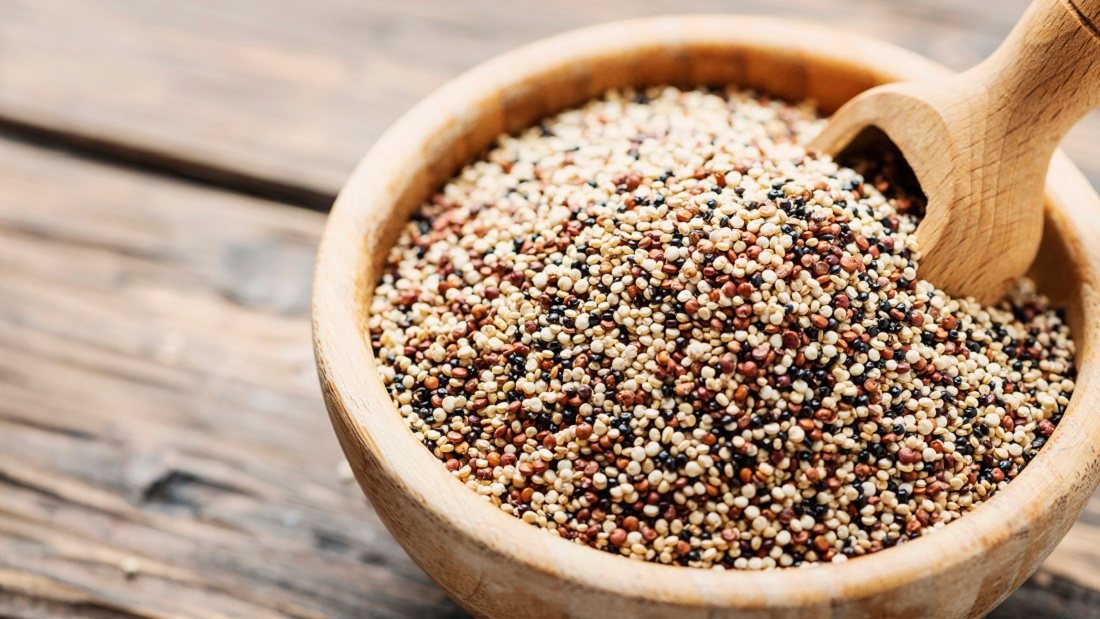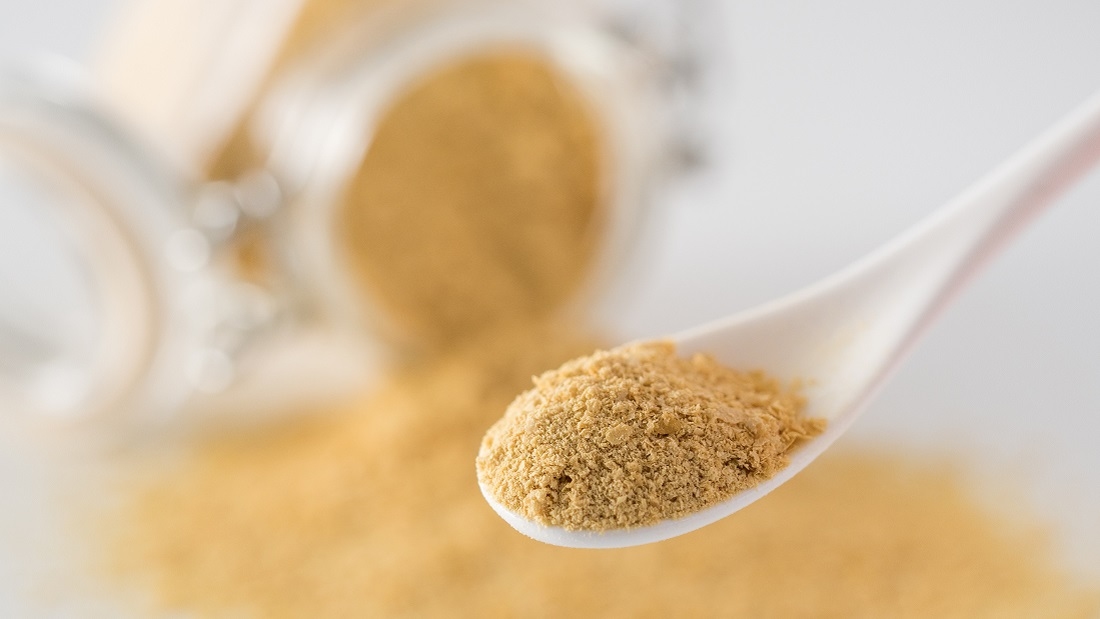Vitamin B2 (riboflavin)

How much do you need daily?
Men need around 1.3 milligram a day and women, 1.1 milligrams of vitamin B2 (riboflavin) per day.
The government recommends the following intakes
| Age |
Amount of vitamin B2 (riboflavin) recommended per day (milligrams) |
|---|---|
| 0-12 months |
0.4 |
| 1-3 years |
0.6 |
| 4-6 years |
0.8 |
| 7-10 years |
1.0 |
| Males |
|
| 11-14 years |
1.2 |
| 15-50+ years |
1.3 |
| Females |
|
| 11-50+ years |
1.1 |
| During last trimester of pregnancy |
+0.3 |
| Breastfeeding |
+0.5 |
Are we getting enough?
The 2016 UK National Diet and Nutrition Survey found that while most people get enough vitamin B2 (riboflavin), many are falling short. Low intakes are particularly high among breakfast-skipping teens with one in five teenage girls and one in 12 boys missing out. But it’s not just young people missing out, 13 per cent of women and three per cent of men aged 19 to 64, and five per cent of older adults are also failing to meet targets.
Why do we need it??
Vitamin B2 (riboflavin) is one of the B vitamins, which are all water soluble. It is essential for energy metabolism, is important for growth, healthy eyesight and red blood cell production. It is also essential for the body to utilise vitamin B6 and is an antioxidant, protecting your cells and DNA from free radicals that can cause damage. The body stores only small amounts of riboflavin in the liver, heart and kidneys, so you need it in your diet every day.
Riboflavin is found in animal and plant foods. You can’t have too much of it from food but if you have very high doses in supplements, it can colour your urine bright yellow (which is harmless and disappears as your body flushes out the excess).
Do I need a supplement?
No, a healthy vegan diet containing the foods below on a daily basis will cover your needs.
The best plant sources

The best plant sources of riboflavin include yeast extract (Marmite/Vegemite), nutritional yeast, quinoa, muesli, fortified vegan breakfast cereals, fortified soya milk, avocado, almonds, wild rice, mushrooms and mange-tout peas.
Nutritional yeast is a food additive that can be used as a condiment or ingredient. It is made from yeast grown on molasses and then harvested, washed and heated to kill or ‘deactivate’ it. It doesn’t froth or grow like baking yeast as it is inactive. It is sold in tubs of flakes that can be sprinkled on dishes or added to sauces. Very popular with vegans, it even has its own nickname – nooch! A five gram teaspoonful of nutritional yeast provides over 70 per cent of your daily requirement of riboflavin. Buy one that’s fortified with vitamin B12 to cover all bases!

Signs of deficiency
Fatigue, slowed growth, digestive problems, cracks and sores around the corners of the mouth, swelling of mucous membranes, swelling and soreness of the throat, eye fatigue and sensitivity to light.
Foods to include
|
Food |
Milligrams of vitamin B2 (riboflavin) per serving |
% of recommended daily amount for women (1.1 milligrams) |
% of recommended daily amount for men (1.3 milligrams) |
|---|---|---|---|
| Yeast extract – Marmite/Vegemite (1 portion, 8g) |
0.95 |
87 |
73 |
| *Nutritional yeast with B12 (5g serving) |
0.90 |
82 |
69 |
| Quinoa (medium portion, 180g) |
0.72 |
65 |
55 |
| Muesli, Swiss style (large portion, 80g) |
0.49 |
45 |
38 |
| Fortified vegan breakfast cereal (Shreddies, medium portion, 50g) |
0.42 |
38 |
32 |
| **Soya milk (average glass, 200g) |
0.42 |
38 |
32 |
| Avocado (1 medium, 145g) |
0.26 |
24 |
20 |
| Almonds (12 whole nuts, 26g) |
0.20 |
18 |
15 |
| Wild rice, cooked (medium portion, 180g) |
0.14 |
15 |
12 |
| Mushrooms, fried (average portion, 44g) |
0.15 |
14 |
12 |
| Mange-tout peas, boiled (medium portion, 80g) |
0.13 |
12 |
10 |
Source: Public Health England: McCance and Widdowson’s The Composition of Foods Integrated Dataset, *Engevita, Marigold Health Foods Ltd, **Alpro Original.
Additional information
Top tips to help you optimise your intake:
- UV light can destroy riboflavin so it may be lost during sun-drying of fruits. Keep foods containing riboflavin out of direct sunlight
- The milling of cereals results in considerable losses of riboflavin, so white flour is fortified in some countries. While this may compensate for the loss, it is better to eat wholegrain varieties which supply many other nutrients alongside riboflavin
- Plant milks and cereals are also often fortified with riboflavin, choose these for an extra boost
- Because riboflavin is soluble in water, it can be lost in cooking water when foods are boiled, try steaming foods instead
Migraine relief
There is some evidence that riboflavin may help prevent migraine headaches in some people and side effects (such as discoloured urine) are minimal.

List of All Nutrients
This post has been categorised in: A-Z of nutrients, A-Zs, Health




